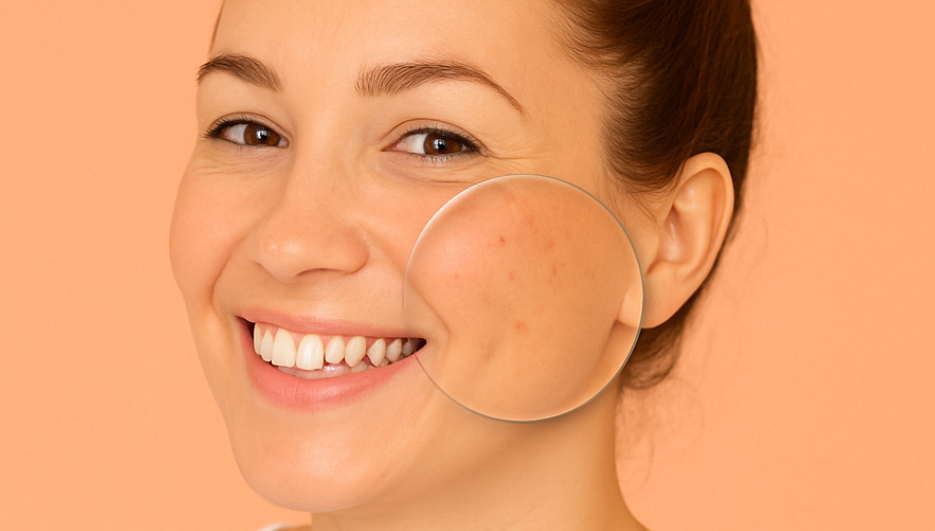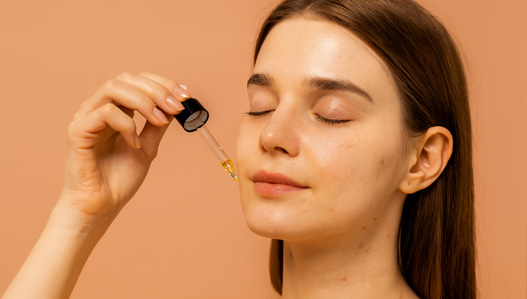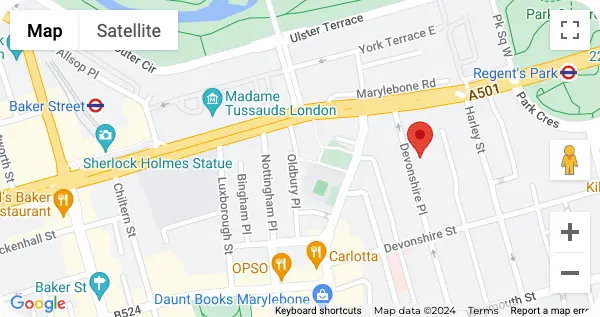Understanding Microneedling treatment
Microneedling is a cosmetic and non-surgical procedure that involves gently perforating the surface layer of skin with tiny needles. The purpose is to induce the body’s natural processes of healing wounds which in turn increases collagen and elastin.
Common uses, including treatment for acne scars
Microneedling is a treatment of several skin-related problems. These include:
- Acne scarring
- Fine lines and wrinkles
- Enlarged pores
- Uneven skin texture and tone
- Hyperpigmentation
It is a preferred treatment for acne scarring as it remodels scar tissue while preserving the epidermis.
Overview of the procedure and how it works
Can Microneedling cause acne? The procedure is generally done using dermapen or dermaroller, which is moved over the skin in a tender manner. The needles can puncture the stratum corneum in varying degrees to address specific conditions. Instead, it produces thousands of microchannels that impel the skin to heal itself by producing new collagen and capillaries. In the clinic, micro-needling is done in a sterile way with post procedure after care protocols to avoid the complications.
Potential Causes of Acne After Microneedling
Skin’s inflammatory response to micro-injuries
When done in a controlled environment, microneedling creates microtrauma that can trigger an immune response in the skin. This is great for repair and regeneration but may also cause a temporary increase in inflammation. This inflammatory response can cause or worsen acne, particularly in individuals with acne-prone skin.
Introduction of bacteria during the procedure
Despite the use of sterile needles, any lapse in hygiene during the procedure can introduce bacteria into the skin. This includes bacteria from:
- Contaminated equipment
- Unclean skin prior to treatment
- Mishandling of devices or substances
Bacterial exposure during the procedure can lead to comedonal or inflammatory acne breakouts post-treatment.
Improper aftercare leading to clogged pores
Poor aftercare can lead to blocked pores. Applying occlusive products, makeup or pollution right after microneedling can also make the debris stay in those small microchannels where the skin is trying to heal itself. This increases the chance for breakouts.
Use of non-sterile equipment or techniques
At-home microneedling devices or non-medical-grade offices hold a much greater risk of infection. Compromised skin integrity and bacterial contamination may occur due to improper needle use, insufficient sterilisation, or the use of expired topical products.
Risk Factors for Post-Microneedling Breakouts
- Pre-existing acne or acne-prone skin
People who previously had acne are predisposed to breakouts following microneedling. This trauma can cause a temporary irritation of the sebaceous glands or an imbalance in the skin microbiome, potentially leading to flare ups.
- Oily skin types and excessive sebum production
The increased sebum production, when combined with dead skin cells and bacteria, will cause pores to clog. This combination is more likely to cause a breakout post microneedling; the procedure makes your skin more absorbent and reactive, making it easy for certain substances to spark blemishes.
- Undergoing treatment during active breakouts
Microneedling should not be done over areas with active cystic or inflamed acne. Microneedling on active spots may result in:
- Worsening of inflammation
- Risk of spreading bacteria
- Delayed healing
Treating clear skin or areas free from active pustules minimises the risk of complications.
- Sensitivity to certain skincare products used post-treatment
All post-treatment products can be irritating to some individuals but especially those that contain:
- Fragrances
- Alcohol
- Essential oils
- Active ingredients like retinoids or alpha hydroxy acids
These will be highly irritating when you apply them on freshly needled skin, can cause dermatitis, or induce acneiform eruptions.
Preventing Acne After Microneedling
Importance of choosing a qualified professional
When performed by a trained skincare professional in a clinic, treatments are less prone to complications. A proper consultation should include:
- Skin type assessment
- Review of current skincare and medical history
- Patch testing if needed
- Use of sterile, medical-grade equipment
Pre-treatment skin preparation and cleansing
Skin should be properly prepped before microneedling to reduce surface bacteria and ensure optimal results. Pre-treatment preparation includes:
- Thorough cleansing with an antibacterial cleanser
- Avoidance of makeup, retinoids or exfoliants 48 hours before the procedure
- Avoiding active breakouts or infections
Post-treatment skincare routines and product recommendations
Proper post-treatment care supports healing and minimises the risk of breakouts. Recommended practices include:
- Gentle cleansing with non-comedogenic products
- Application of barrier-repairing moisturisers
- Use of broad-spectrum SPF to protect sensitised skin
Recommended ingredients post-procedure include:
- Hyaluronic acid
- Panthenol
- Centella asiatica
Avoiding makeup and heavy products during recovery
For at least 24 to 48 hours post-treatment, makeup should be avoided. This helps prevent:
- Pore blockage
- Bacterial introduction
- Interruption of the healing process
Instead, a minimalistic skincare approach with hydrating and calming products is advised.
Effective & professional doctor-led Can Microneedling Cause Acne at our central London clinic
Verified Before & After
Verified Before & After
Managing Breakouts Post-Treatment
Identifying normal vs. concerning reactions
Post-microneedling skin may present with transient redness, mild swelling and sensitivity. These are normal and expected. However, signs of concern include:
- Clusters of pustules or papules
- Persistent redness beyond 72 hours
- Oozing, crusting or signs of infection
Understanding the difference is crucial for timely intervention.
Recommended products for soothing and treating breakouts
If mild breakouts occur, non-comedogenic and soothing products can be used. These may include:
- Niacinamide serums
- Oil-free moisturisers
- Thermal spring water sprays
- Anti-inflammatory gels containing zinc or azelaic acid
Topical antibiotics or benzoyl peroxide should only be used under professional supervision, as they can be too harsh on sensitised skin.
When to seek medical advice or intervention
Medical review is advised if:
- Breakouts worsen significantly within 48 to 72 hours
- Pustules become painful or deep
- There is spreading redness or warmth indicating potential infection
- No improvement is observed with conservative care
Timely advice from a clinic can help prevent post-procedure complications.
Is Microneedling Right for Acne-Prone Skin?
Benefits of microneedling for acne scars
Microneedling remains a popular and effective treatment for post-acne scarring. It can improve:
- Atrophic scars
- Boxcar and rolling scars
- Skin texture and pigmentation irregularities
Microneedling encourages dermal remodelling without removing the skin surface, making it a favourable choice for many.
Considerations for those with active acne
Active acne lesions are contraindicated in microneedling. The presence of:
- Nodules
- Papules
- Pustules
means that the skin is already inflamed and compromised. In these cases, microneedling can cause more harm than benefit.
Treatment should be postponed until the acne is under control. In some cases, pre-treatment with a dermatologist-prescribed regimen is required.
Alternative treatments to consider
For individuals unsuitable for microneedling due to active acne or sensitivity, alternatives may include:
- Chemical peels
- LED light therapy
- Salicylic acid facials
- Oral or topical prescription treatments
These methods may better suit the skin’s condition while still addressing concerns such as congestion, inflammation and early scarring.
Consultation with dermatologists or skincare professionals
A personalised assessment is vital. Not all acne-prone individuals are automatically excluded from microneedling, but a proper evaluation is needed. This ensures that the treatment plan is both safe and effective, tailored to skin type, current condition and long-term goals.
Conclusion
Recap of key insights
- Microneedling may work for acne scars but can also cause breakouts if not done properly
- Breakouts post-procedure can result from inflammation, bacteria, poor aftercare or unsuitable products
- People with acne-prone or oily skin are at higher risk
- Complications are minimized by preventive measures and high standards of medical care.
Emphasis on individualised care and professional guidance
Microneedling is a tremendous innovation in aesthetic dermatology, and the key to success lies in taking a comprehensive, individualised approach. Skin evaluation, treatment research and extensive adherence are necessary. There is no single solution for acne.
Encouragement to make informed decisions based on skin type and condition
Decisions are based on the knowledge of your skin health, history and concerns so that outcomes can be related to this. For those with acne-prone skin, a professional skincare consultation can help them see if microneedling is the best option or if it might lead them to an alternative treatment.
Reserve a microneedling appointment
One of our experts will be more than happy to answer any questions you have.
Book AppointmentClaudia Baillie
★★★★★
Excellent service. Would recommend
12th December 2025
Christina Kotsamidis-ventouras
★★★★★
I had a wonderful experience - very thorough and painless. Highly recommend!
10th December 2025
Katia T
★★★★★
Excellent service
12th December 2025









